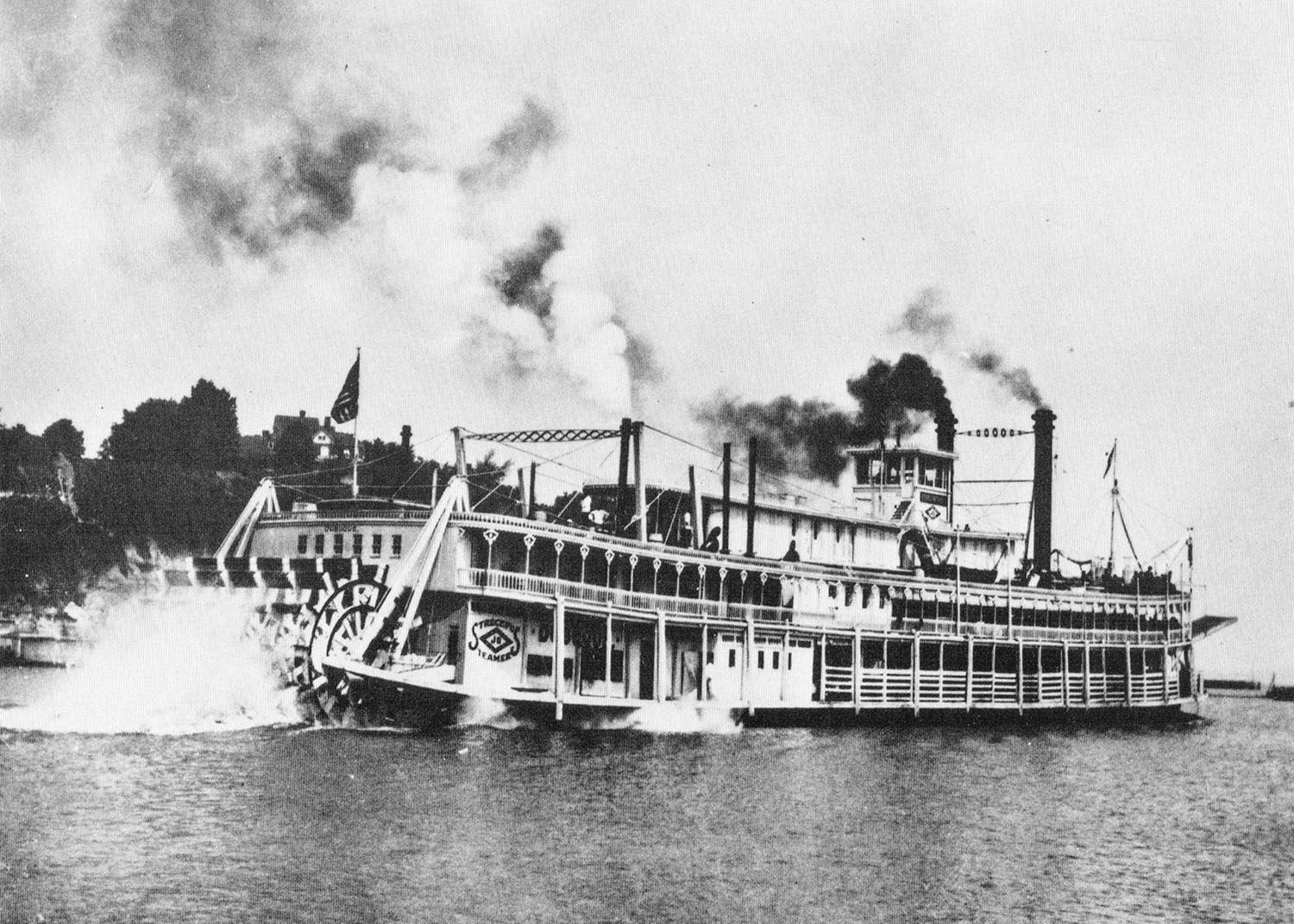This week, the Old Boat Column presents a recently-acquired image of the steamboat Dubuque. This large sternwheeler was originally known as the packet Pittsburgh.
Built in 1879 by the Cincinnati Marine Ways, the vessel was owned by the Cincinnati & Pittsburgh Packet Company, of which David Gibson was president. The boat was constructed on a wooden hull, measuring 250 feet in length by 39.2 feet in width and having a depth of 5.8 feet. Four boilers (with six flues) supplied steam to engines having 21-inch cylinders with a 7-foot stroke. The paddlewheel was 21 feet in diameter and had bucket planks 28 feet long.
The riverboat reportedly drew 24 inches of water when new and had a reputation for making speedy trips between Cincinnati and Pittsburgh. By 1882, the boat was making trips between Pittsburgh and St. Louis. Shortly thereafter, the Pittsburgh was sold to the famous Diamond Jo Line and headquartered at St. Louis for service on the Upper Mississippi River.
The infamous cyclone of 1896, which struck the St. Louis waterfront with great loss of life, demolished the upper works of the boat. The hull was taken to Dubuque and rebuilt with new measurements of 257.2 feet long, 40.6 feet wide and a depth of 6.1 feet. The engines were replaced with new ones of the original size, and three new boilers were installed. The superstructure was rebuilt and the name was changed to Dubuque; the boat continued operating for the Diamond Jo Line. Capt. William Burke served as master for 27 years under both names.
In July 1901, the steamer sank after ripping a 142-foot-long hole in the hull at Keithsburg, Ill. The riverboat was quickly raised, repaired and service was resumed.
The Streckfus Line purchased the boat in 1910 and continued packet service until 1917, making a charter trip in the spring of 1912 to the Shiloh Battlefield for the St. Louis & Tennessee River Packet Company.
In November of 1914, Capt. Charles Martin, pilot, died at the wheel as the boat approached the railroad bridge at Alton, Ill. The engineer on watch noticed the boat veering off course, stopped and quickly backed full, averting tragedy. The off-watch pilot, Capt. Jack Richtman, was quickly summoned to the pilothouse as the trip resumed.
During the winter of 1919–20, the boat was taken to Keokuk, Iowa, for renovations, with the work completed at Davenport. It was renamed Capitol. The staterooms were removed to make room for excursionists, and four new boilers were installed. The sternwheel was modified to measure 25 feet in diameter with 30 foot bucket planks having a dip of 24 inches. The pitmans were 24 feet long. There were four main rudders with two monkey rudders (aft of the wheel) to aid in steering the big sternwheeler.
From 1920 until 1941, the Capitol traversed the Mississippi from St. Louis to St. Paul, usually wintering in New Orleans. After a long and fruitful career, the riverboat was retired, dismantled and scrapped in 1945 at the St. Louis levee. This writer prizes a small section of jigsaw railing that was rescued by river historian Ruth Ferris (1897–1993).
Caption for photo: The Dubuque underway on the Mississippi River. (Keith Norrington collection)
Editor’s note: For questions or suggestions regarding the Old Boat Column, Keith Norrington may be contacted by e-mail at curatorkeith@yahoo.com, or by mail through the Howard Steamboat Museum at P.O. Box 606, Jeffersonville, Ind. 47131-0606.




